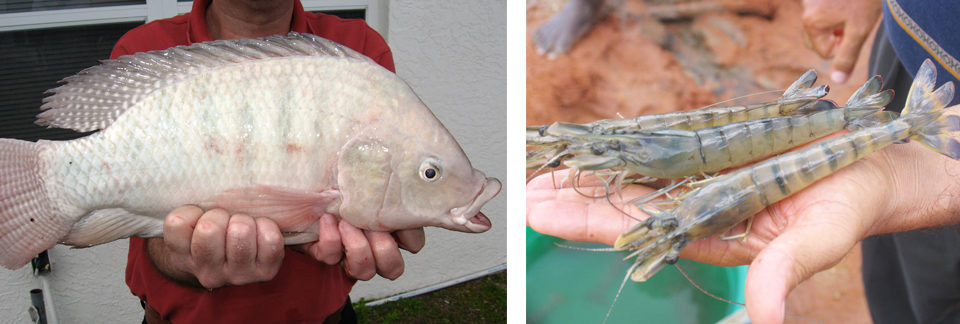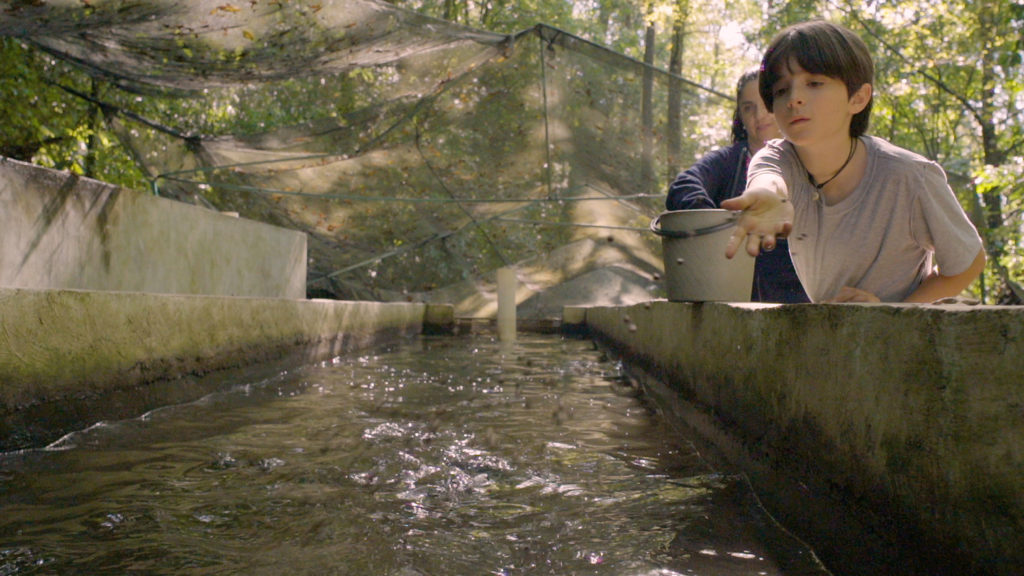Build-up of bodily stores greatly influences reproductive success

It has long been recognized that the first step in the process of rearing quality animals is to provide increased levels of care and nutrition to the broodstock. Today, the roles played by specific nutrients in the process of gonadal maturation, fecundity and fertilization rates, and subsequent embryo and larval development have largely been described.
However, due to the high number of species cultured in aquaculture, specialized commercial broodstock feeds are limited in application. This has resulted in the continued use of many artisanal practices to nourish aquaculture broodstock. These include the use of raw seafood, commercial feeds, specialized additives and combinations of all three. With the exception of a few highly technical hatcheries, scientific management of broodstock nutrition is often not part of the overall hatchery management program.
Science-based broodstock nutrition management will ensure that broodstock are provided with the energy and nutrients in the proper profiles and at the right times for maximum reproductive performance.
Nutrition components
A broodstock nutrition program is a management plan focused on the tasks of optimizing egg quality, hatch rate and offspring production. For this plan to be successful, it is imperative that managers have an understanding of the interactions of nutrition and reproductive performance, as well as the animals’ reproductive cycles (continuous or batch).
Start off by selecting quality broodstock based on animal age and the objectives of your business, such as weight gain, disease resistance or physical appearance. The animals need to be properly housed to establish the needed social structures for natural spawners or facilitate low-stress handling for artificial spawning. Depending on the goals, all animals need to be individually identified with tags, clips or brands.
Use the appropriate feeding regime based on spawner type. For example, spring-time batch spawners should be fed a standard complete diet through the summer and early fall months. Feeding during this period should be geared toward maintaining healthy animals at a high level of well-being. They should be mature in size and gain only a small percentage of weight over the summer. Overfeeding and excessive weight gain can negatively impact spawning success.
Animals should be switched to a broodstock formulation for three to four months during the fall and winter for maximum gonadal development. Batch spawners enter a starvation period after gonadal development and rely on bodily stores to supply immense amounts of energy and specific nutrients for final gonad and ovary maturation and ultimately spawning. Therefore, providing the specialized nutrition to allow the build-up of bodily stores greatly influences reproductive success.
Continuous spawners, including several marine species, should be fed a high-quality broodstock ration continuously while maintained in spawning cycles. The egg quality of these species can easily be influenced by diet.
Modern broodstock feed formulations are commercially available and very effective for some species. However, the variety of species utilized in aquaculture today requires the continued use of raw seafood to provide critical nutrients for many species. Proper management of broodstock nutrition is the key to maximizing reproductive success. This encompasses providing the right amounts of the proper specialized nutrients during the right developmental stages.
Program implementation
It is critical to have a clear understanding of which traits should be measured to assess the effectiveness of a broodstock nutrition program. Although the specific nutrient requirements for reproductive success have not all been defined for the 200 species cultured, the management goal is to develop a set of historical data that will make reproductive success predictable. This will require a manager to tag and track individual animals, collect data on a variety of hatchery traits and establish historical values for a set of traits relevant to reproductive performance.
Spawning success is measured as the percentage of females ovulating. This practical measurement can be collected regardless of the hatchery type. Managers simply need to track spawn numbers and divide by the total number of female broodstock to determine the percentage of females that spawn in a time period. Tracking spawning success will show spawning trends and allow proper planning of broodstock replacements, fry production and future feed needs.
Fecundity, fertilization and hatching rates are significantly affected by dietary nutrient level, and therefore are good indicators of the effectiveness of a nutrition program. Tracking these characteristics requires more technical oversight, which does increase the cost of the program, but it is the best means to ensure the expensive nutrients in feeds and supplements are utilized by the animals.
Fecundity is the number of eggs per body weight of individual female or total number of eggs per spawn. From a practical standpoint, fecundity can be measured as the total number or mass of eggs per total number or mass of females over a given period of time.
Fertilization can be measured on a per-spawn basis as the total number of spawns that develop eyes relative to the total number of spawns over a given period. Hatching rate – best measured on a per-spawn basis – is the number of spawns that hatch relative to the total number of spawns. Each of these measurements can be calculated on a short-term basis to track immediate progress and on a seasonal basis to track overall program success.
Tracking embryo development and larval survival is a good means of tracking overall hatchery success. Depending on species, this can include tracking percentages of swim bladder inflation, deformities, survival to metamorphosis and total survival.
Many environmental and genetic factors affect these traits, including water temperature, pH, nitrogenous waste, age and nutritional status of broodstock, and nutritional status of offspring. Therefore, it is just as important to measure as many of the previously mentioned traits as is practical as it is to look at the hatchery product (embryo and larval survival) when determining the effectiveness of a broodstock nutrition program. Only by tracking the data collected on these traits can proper adjustments be made regarding the nutritional status of the broodstock.
Nutritional considerations
Commercial broodstock rations and high-quality raw seafood are not universally available. However, it is often possible to work with a local supplier to formulate a custom ration or supply the specific nutrients that will allow any facility to benefit from managing broodstock nutrition. Key nutritional considerations, regardless of species, that have been shown to significantly improve reproductive success are listed in Table 1.
Snyder, Key broodstock nutrients, Table 1
| Nutrient | Source | Dietary Level |
|---|
Nutrient | Source | Dietary Level |
|---|---|---|
| n-3 highly unsaturated fatty acids | Marine oils | 1-2% |
| Vitamin E | – | 250 ppm |
| Carotenoids | Astaxanthin | 100 ppm |
| Vitamin C | Stable vitamin C | 200 ppm |
| Amino acids | Marine animal protein | 80% of dietary protein |
Perspectives
It is not hard to place a monetary value on the benefits of assessing the effectiveness of managing broodstock nutrition when you consider the excess level at which many hatcheries operate. While there is limited species-specific information regarding broodstock nutrition and limited availability of commercial broodstock feeds, it is still possible to scientifically manage broodstock nutrition. Managing broodstock nutrition will enhance reproductive performance and result in increased profit opportunities, regardless of farm location and size.
Bottom Line: Managing broodstock nutrition enhances overall profitability.
(Editor’s Note: This article was originally published in the March/April 2013 print edition of the Global Aquaculture Advocate.)
Now that you've reached the end of the article ...
… please consider supporting GSA’s mission to advance responsible seafood practices through education, advocacy and third-party assurances. The Advocate aims to document the evolution of responsible seafood practices and share the expansive knowledge of our vast network of contributors.
By becoming a Global Seafood Alliance member, you’re ensuring that all of the pre-competitive work we do through member benefits, resources and events can continue. Individual membership costs just $50 a year.
Not a GSA member? Join us.
Authors
-
Scott Snyder, Ph.D.
Animal Nutritionist
Zeigler Bros., Inc.
P. O. Box 95
Gardners, Pennsylvania 17324 USA -

Thomas R. Zeigler, Ph.D.
Senior Technical Advisor
Past President and Chairman
Zeigler Bros., Inc.
P. O. Box 95
Gardners, Pennsylvania 17324 USA
Related Posts

Health & Welfare
A comprehensive look at the Proficiency Test for farmed shrimp
The University of Arizona Aquaculture Pathology Laboratory has carried out the Proficiency Test (PT) since 2005, with 300-plus diagnostic laboratories participating while improving their capabilities in the diagnosis of several shrimp pathogens.

Health & Welfare
A holistic management approach to EMS
Early Mortality Syndrome has devastated farmed shrimp in Asia and Latin America. With better understanding of the pathogen and the development and improvement of novel strategies, shrimp farmers are now able to better manage the disease.

Responsibility
A look at various intensive shrimp farming systems in Asia
The impact of diseases led some Asian shrimp farming countries to develop biofloc and recirculation aquaculture system (RAS) production technologies. Treating incoming water for culture operations and wastewater treatment are biosecurity measures for disease prevention and control.

Intelligence
A motive, and a market, for farmed fish in Mexico
Boasting ample areas for aquaculture and a robust domestic demand for seafood – not to mention its close proximity to the U.S. market – a land of opportunity lies in Mexico. Fish farming is primed to meet its potential south of the border.



